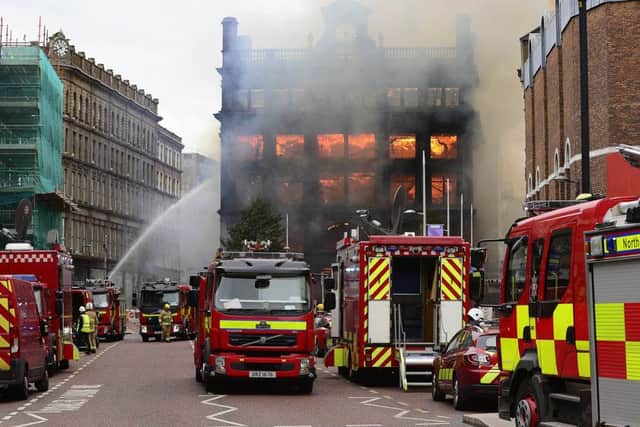NIFRS chief's assurance over high-rise fires following Primark inferno
and live on Freeview channel 276
NIFRS group commander Alan O’Neill said that although fire and rescue personnel were unable to prevent a fire spreading beyond the upper floors of the Bank Buildings in Royal Avenue – which houses the Primark store – initial indications are that nothing more could have been done to save the landmark building.
The alarm was raised around 11am on Tuesday and at the height of the blaze there were 14 appliances and 100 firefighters tackling the inferno.
Advertisement
Hide AdAdvertisement
Hide AdMore than 300 people worked at the busy store which was being refurbished at an estimated of cost £30 million.


The remaining shell of the building is still being assessed to establish if it is safe to allow the 14 business premises inside the safety cordon to re-open.
NIFRS group commander Alan O’Neill said: “We will remain at the scene for the next couple of days as a precautionary measure. And those 14 businesses which are around that area, they are going to remain closed until such time as it’s appropriate to say that the [fire damaged] building is safe.”
Mr O’Neill also said he was satisfied NIFRS personnel are adequately trained to deal with such incidents.
Advertisement
Hide AdAdvertisement
Hide Ad“With every significant incident we will always carry out a review, but the initial indications were that everything went as well as it could have done,” he said.
“We probably took some measures there that we wouldn’t normally use, so we went above and beyond our normal practice, the likes of rolling out the overground main from the Lagan – that was something that wouldn’t be normal practise but actually paid off really well.”
Asked if he was content that he had the necessary equipment to cope in every situation, Mr O’Neill said: “Absolutely. As a fire and rescue service we have four aerial ladder platforms right across the organisation, so they can arrive early on [at a fire or rescue operation] which takes us up to a good height in a building. But that is also something we do which is part of our core training – working with high-rise procedures – and the crews are well versed in that.
“We’ve had quite plenty of high-rise incidents over the weeks, months and years and we’ve always dealt with them quite comfortably. You never know what’s around the corner but we are certainly well prepared and well equipped.”